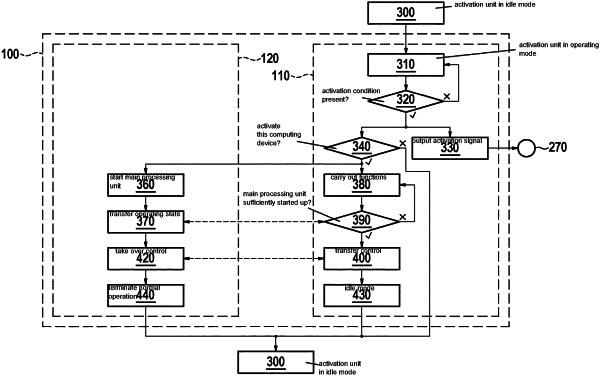| CPC G06F 1/3287 (2013.01) [B60R 16/023 (2013.01); G06F 1/3203 (2013.01); G06F 1/3209 (2013.01); H04L 12/40039 (2013.01); H04L 12/40123 (2013.01); H04L 12/40195 (2013.01); H04L 2012/40215 (2013.01); H04L 2012/40273 (2013.01); Y02D 10/00 (2018.01)] | 13 Claims |

|
1. A computing device, comprising:
a first processing unit and a second processing unit that are connected to one another in a data-transmitting manner;
wherein:
the second processing unit is configured to perform a function by executing an entire sequence of steps; the first processing unit is configured, upon recognition that an activation condition is present, to:
determine whether the activation condition requires an activation of the second processing unit;
when a result of the determination is that the activation condition requires the activation of the second processing unit, activate the second processing unit by outputting an activation signal, including the activation condition, on an activation line;
determine that the function is required to be performed;
after the outputting of the activation signal and based on the determination that the function is required to be performed, iteratively perform the following until an end condition:
determine whether the second processing unit is in an awake state by which the second processing unit is able to proceed with the performance of the steps of the function; and
in response to a negative result of the determination of whether the second processing unit is in the awake state, proceed with performance of a part of the sequence of steps; and
in response to the end condition, transfer to the second processing unit continued performance of the function so that a remainder of the sequence of steps not yet performed by the first processing unit is performed by the second processing unit; and the end condition is a positive result of the determination of whether the second processing unit is in the awake state.
|